One of the more under-the-radar stories from Baselworld was the official debut of the TAG Heuer Monaco Bamford. Since 2004, watch mod-authority George Bamford has worked on the outskirts of the watch industry. His creations have ranged from blacked-out Rolex Daytonas to Rolex Yacht-Masters with pop culture icons such as Popeye on the dial. Last summer, recognition came for Bamford in the form of an announcement that he would become the official customization partner for Zenith. This year, TAG Heuer received the same treatment and a commemorative Monaco was released at Baselworld with a carbon case and a pitch-black dial with aqua blue accents. We had the chance to catch up with Jean-Claude Biver, LVMH Head of Watchmaking, and Bamford during the fair. Here’s what they had to say about each other.
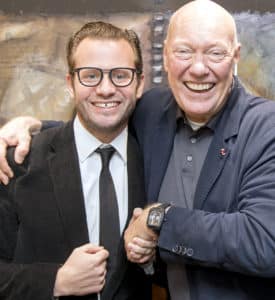
Biver on Bamford
LB: When did you first become aware of George Bamford and what made you decide that he would make a good partner?
JB: I have known about him for quite a long time. Anybody who is in the watch industry has seen his production. And, anybody who has been in the watch industry has seen he has transformed certain boring watches, into sexy watches. I’ve always admired him. I said, “God damn, this guy has something special.” He can make a boring watch sexy without changing too much. I said we should also do that. We also make boring watches. We should get some influence, we should try to collaborate. I said, “Let’s call him.” So I called him and he was surprised that I would call. Two or three days later, I met him in London.
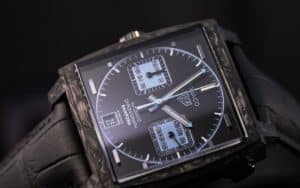
LB: A lot of people have different opinions on customization. Have you always held the same opinion or is that something that developed over the years?
JB: No, I always had the same opinion but I thought that for a big brand like TAG it is not something that’s essential. But on smaller brands like Hublot we do a lot of individualization. Hublot is probably one of the brands that does the most. We do so many special editions, 10 pieces, 50 pieces. So when I had my first brand, Blancpain, I had seen more and more that the need for individualization is also in larger brands. Because a customer is a customer and if somebody who buys a $50,000 watch wants customization, it’s OK, but for people who buy a $1,000 watch, why can’t they have individualization? That is new, that individualization is now among most of the customers. Not only in the upper end, it’s also average.
LB: Recently, in a Wall Street Journal article, you mention that your son Pierre, your stepdaughter Carolina, and their friends have advised you on various trends. What do they think of Bamford?
JB: They love Bamford because they have seen Bamford with Mickey Mouse, Bamford with this, you know. They know exactly, they know the connection. Because they know Alec Monopoly, they know Bamford. Because they know Kanye West, they know Hiroshi Fujiwara. They know better than me. So they know and they knew Bamford and they love Bamford. They say, “Wow, Papa, great. I want the watch.” I swear I had to buy one from Bamford for my son.
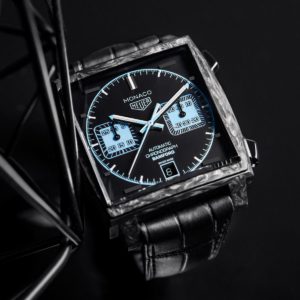
LB: The new Monaco with the carbon case?
JB: No, it was the Zenith, designed by Bamford and Hiroshi Fujiwara.
LB: What demographic do you think will be attracted to the Bamford collection?
JB: I think it’s the 35, 40, 50 [age range]. It will be the part of the population that is ready to buy something special. The first watch you buy, you will not need individualization. It’s already such an achievement to buy your first Rolex or your first Hublot or Patek. Ahh, it’s enough. It’s once you buy your second or third one you say, “Can I not have something special?”
LB: Will there be more official collaboration watches between Bamford and LVMH?
JB: Yes. There will be a real collection one day. We’re going to build a real concept with Bamford watches.
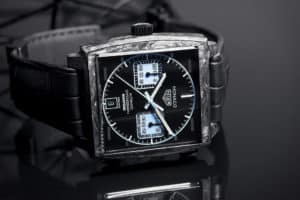
Bamford on Biver
GB: I’m sure you brought loads of questions, but what I wanted to say to you first, is that last year I came to Basel, we had signed the contract, and I was coming just to see Jean-Claude and he said to me, “Come with a wish list of what you’d like to do.” For me, the Monaco was my pin-up watch. I used to have a Steve McQueen poster on my wall from Le Mans.
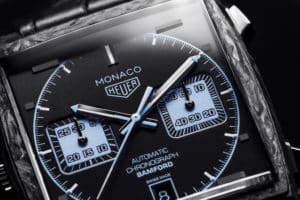
LB: So how does it feel to now have your name on it?
GB: Well, I’m part of the history. And today history starts, and the thing is I have this big, big quote in my office that says, “Never look at the last chapter. Always look at the next chapter.” And I always think you’re only as good as the thing you’ve just done. So, I always think that it’s great to look to the future and never the past. And this looks like the future. It’s a Monaco, so it is a past product, but you know I could have done something like the Dark Lord that was an iconic Monaco, but for me, I didn’t want to do that. There is a bit of a nod to the Dark Lord because you’ve got steel pushers and steel craft with aqua blue Heuer on it. So I was just like, “Oh my god, this is amazing” and then my next thought was, “Oh, they will stop at this. That will be it.” So I arrived this year and they said, “What are we doing next?”
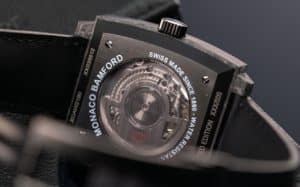
LB: So, off of that, how did your relationship with Biver start. When did you first meet him?
GB: Um, so he says it was about a phone call. I would say it is a phone call, but he was with a friend on it and she said to me, “Ah, I’m sitting next to this person, you may know him. He’s called Mr. Biver. He wants to come and see you tomorrow.” They were at supper and I was like, “What? Who? Really? What, no!” The next day it was like a god arriving at my office. And he said, “You and I have got to work together. You have to have an official relationship with us.” And that for me just made me go, “Wow, OK.” Lightning bolt moment. He said, “You’re going to see how much a brand can love you”, and he really has, and everything is this wonderful love affair.
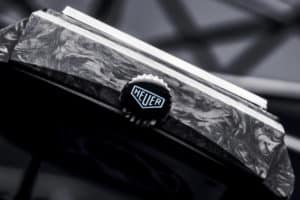
LB: How did you find a passion for customizing watches?
GB: Personalization for me was always about individuality. We all have our own individual style. So, why is it that we’re being told that you have to have this watch that fits what? And that’s where I, I was always like, well, why doesn’t it fit me? Why isn’t it a part of me? I’ve probably got an ego for this, but that was why I always wanted personalization. I wanted individuality. As a kid, I took a Breitling Navitimer apart. It was my first light bulb moment in watches. My first proper watch was a TAG Heuer Formula 1. And then the first watch I took to bits was a Breitling Navitimer in 1996 or 1994, I can’t remember which year ’cause it’s engraved on the back. I had a pin knife and was religiously taking it to bits. It was the frustrated engineer in me. I always wanted to kind of learn about watches and that was how I got into watches. And then it was like, “I can do that, why didn’t I do that earlier?” And that’s how my business grew and how it happened.
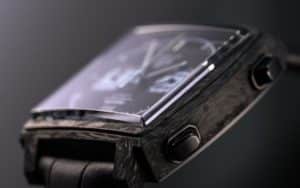
LB: Since your relationship with LVMH began, how has the reaction been among your previous clientele, your fans?
GB: They’re loving it. We’ve seen increased sales. Also, because our price points got better, but I think what we’re doing is exciting and it’s exciting for our customers.
LB: There was a time when watch puritans didn’t fully understand the opportunity that high-quality customization offered. Now that you’re at Baselworld with LVMH, how does it feel to be officially recognized by a brand?
GB: I’m a kid in the candy store. I want to run around naked almost. This is so freaking cool, I really feel like a kid in a candy store. I was voiceless yesterday. I fell over yesterday because they presented the watch and I just fell over.






